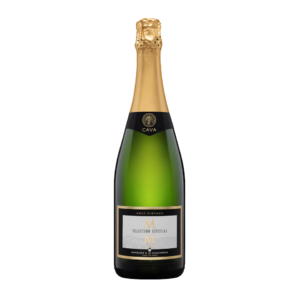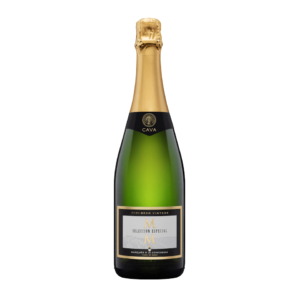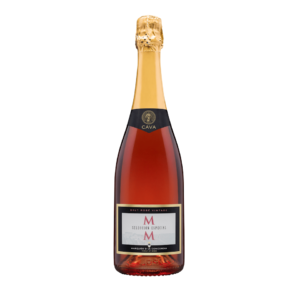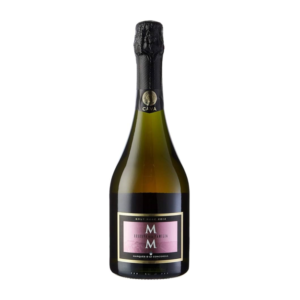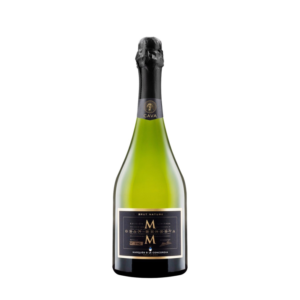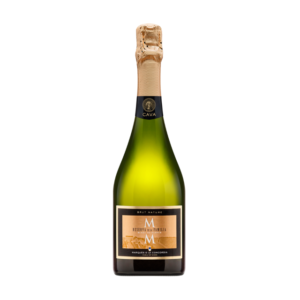Showing all 6 resultsSorted by popularity
Cava – The Complete Guide
TL;DR: In Brief
– Cava is characterized by its distinctive bubbles and production using the traditional method (méthode champenoise)
– Primarily made from Macabeo, Parellada, and Xarel·lo grapes and defined by its secondary fermentation in the bottle
– Available in several styles, including Brut Nature, Brut, and Rosé
– Best enjoyed in flute glasses at 6-8°C and can be experienced in Cava Mimosas or Cava Royale cocktails
Disclaimer: This guide is intended for informational purposes for adults over 18 years of age. Vault of Spirits encourages responsible alcohol consumption.
Introduction to Cava
Cava has a rich history and fascinating craftsmanship behind it. From its origins in Spain’s Catalonia region to its global popularity today, this sparkling wine has evolved to become one of the world’s most appreciated alternatives to Champagne.
This guide provides insight into the production, flavor notes, and enjoyment of Cava, whether you’re a beginner or experienced enthusiast.
While often compared to Champagne, Cava stands on its own with a unique character that reflects Spain’s terroir and winemaking traditions.
How Did Cava Originate?
From Past to Present
Cava’s story begins in the late 19th century in the Penedès region of Catalonia, Spain. Josep Raventós of Codorníu winery is credited with producing the first Cava in 1872, after returning from a trip to Champagne, France.
Inspired by French methods but using local Spanish grape varieties, Raventós created a distinctive sparkling wine that would become Spain’s signature bubbly.
Originally called “Spanish champagne,” the term “Cava” (meaning “cellar” in Catalan) was adopted in 1970 following European regulations that restricted the use of the term “champagne.”
Which Historical Milestones Have Shaped Cava?
In 1972, Cava achieved official Denominación de Origen (DO) status, establishing strict production guidelines to maintain quality standards.
The introduction of mechanical disgorgement and modern temperature control in the 1960s revolutionized production efficiency while maintaining traditional methods.
In 1986, when Spain joined the European Union, Cava gained protected geographical status, further cementing its international recognition.
The creation of premium categories like Cava de Guarda Superior in 2020 has elevated the wine’s prestige, encouraging longer aging and higher quality standards.
How Has Cava Influenced Cultural Traditions?
In Catalonia, Cava is an essential element of celebrations, from weddings to Christmas and New Year’s festivities.
The tradition of drinking Cava during New Year’s Eve celebrations in Spain includes eating twelve grapes, one with each strike of midnight, for good luck.
Cava’s affordability compared to Champagne has democratized sparkling wine consumption, making it accessible for everyday celebrations rather than just special occasions.
The industry has significantly influenced the economy and tourism in the Penedès region, with wineries offering tours and tastings that showcase local culture.
Why Is Cava Popular Today?
Cava offers excellent value compared to other traditional method sparkling wines, delivering similar quality at a more accessible price point.
The global trend toward lighter, more refreshing drinks has boosted Cava’s popularity as a versatile aperitif and food pairing option.
Environmental consciousness has drawn attention to Cava producers’ sustainable practices and use of indigenous grape varieties.
Social media and food culture have highlighted Cava’s food-friendliness, promoting it beyond just celebratory occasions to everyday enjoyment.
How Is Cava Produced?
Which Raw Materials Are Used in Production?
Cava production centers around a specific set of traditional and permitted grape varieties that give this sparkling wine its distinctive character.
The terroir of Catalonia, with its Mediterranean climate and varied soils, plays a crucial role in developing the grapes’ unique qualities.
Primary ingredients:
– Macabeo (Viura) – Provides freshness, delicate aromas, and moderate acidity
– Parellada – Contributes finesse, floral notes, and elegance to the blend
– Xarel·lo – Adds structure, body, and distinctive herbal character
– Chardonnay and Pinot Noir – Increasingly used in modern Cavas for complexity
How Does the Fermentation Process Work?
Cava undergoes two distinct fermentation processes. The primary fermentation converts grape sugars into alcohol, creating a still base wine.
The secondary fermentation—the defining characteristic of Cava—occurs in the bottle. After adding a mixture of wine, sugar, and yeast (tirage), bottles are sealed with crown caps.
As yeast consumes the sugar, it produces alcohol and carbon dioxide that remains trapped in the bottle, creating Cava’s signature bubbles.
During this period, yeast cells break down (autolysis), releasing compounds that create the brioche, nutty, and toasty flavors characteristic of traditional method sparkling wines.
Which Production Techniques Are Used?
Cava production follows the traditional method (méthode traditionelle), the same process used for Champagne, with each bottle individually handled through multiple stages.
Common production methods:
– Traditional Method – Involves secondary fermentation in bottle, giving finer bubbles and complexity
– Riddling (Remuage) – Gradual rotation and inversion of bottles to collect yeast sediment in the neck
– Disgorgement – Freezing the bottle neck and removing the sediment plug before adding the dosage
– Aging on Lees – Required minimum of 9 months, with premium Cavas aged 15-30+ months
What Is the Significance of Aging?
The minimum aging period for Cava is 9 months on the lees, significantly longer than many other sparkling wines.
Premium categories like Reserva (15+ months), Gran Reserva (30+ months), and Cava de Paraje Calificado (36+ months) develop increasing complexity through extended aging.
During aging, the interaction between wine and lees creates autolytic flavors—biscuit, bread, and brioche notes that add depth and character.
The size and persistence of the bubbles improve with age, becoming finer and more integrated into the wine’s texture.
Which Regions Are Known for Cava?
Where Are the Best Variants Produced?
While Cava can legally be produced in several regions across Spain, over 95% comes from Catalonia, with the Penedès region as the heartland of production.
Sant Sadurní d’Anoia, a small town in Penedès, is considered the capital of Cava, home to many major producers including Freixenet and Codorníu.
The Comtats de Barcelona zone, particularly the subzones of Valls d’Anoia-Foix and Serra de Mar, produces some of the most prestigious Cavas.
Other authorized regions include Valencia, Extremadura, Aragón, Rioja, and Basque Country, each bringing regional character to their Cavas.
How Do Geography and Climate Affect the Taste?
The Mediterranean climate of Penedès provides warm days and cool nights that help grapes retain acidity while developing flavor complexity.
Higher altitude vineyards (up to 800 meters above sea level) produce more elegant, fresh wines with higher acidity and lower alcohol.
Coastal influence in zones like Serra de Mar introduces saline notes and minerality to the wines.
The diverse soils—including limestone, clay, and sandy compositions—contribute to the complexity and terroir expression in different Cavas.
What New Trends Are Seen in Cava Production?
Organic and biodynamic Cava production is growing rapidly, with producers focusing on sustainability and minimal intervention.
Single-vineyard Cavas (Cava de Paraje Calificado) highlight terroir expression from specific plots with exceptional characteristics.
Some producers are leaving the Cava DO to create their own premium categories, such as Corpinnat and Classic Penedès, focusing on stricter quality standards.
Extended aging is becoming more common, with top producers releasing Cavas aged 5-10 years before release, challenging the perception of Cava as only for immediate consumption.
What Do the Different Quality Designations Mean?
The Cava DO has a structured hierarchy of quality levels based primarily on aging requirements:
Cava (standard): Minimum 9 months aging on lees
Cava Reserva: Minimum 15 months aging on lees
Cava Gran Reserva: Minimum 30 months aging on lees, must be Brut or drier
Cava de Guarda Superior includes both Gran Reserva and the newer premium categories:
Cava de Paraje Calificado: Minimum 36 months aging, from a single exceptional vineyard
Sweetness levels are also regulated, ranging from Brut Nature (no added sugar) to Sweet (50+ g/L of sugar).
How Does Cava Taste?
What Characterizes the Typical Flavor Profile?
Cava typically shows bright acidity with a combination of fresh fruit flavors and autolytic notes from aging.
The characteristic fine, persistent bubbles create a creamy mousse that adds textural complexity.
Typical aromas:
– Fruit – Green apple, lemon, pear, white peach, and sometimes quince
– Autolytic – Bread dough, brioche, toast, and toasted nuts
– Floral/Herbal – White flowers, chamomile, Mediterranean herbs, and fennel
How Does the Taste Vary Between Different Styles?
Brut Nature and Extra Brut styles emphasize minerality and crisp acidity, with pronounced citrus and apple notes.
Brut and Extra Dry styles offer more roundness, with additional pear and stone fruit flavors balancing the acidity.
Rosé Cava, made with the addition of Garnacha or Monastrell, introduces red fruit flavors like strawberry and raspberry.
Vintage or Gran Reserva Cavas develop more complexity, with pronounced autolytic notes of toast, nuts, and honey complementing the fruit character.
How Does the Flavor Develop with Age?
Young Cava (9-15 months) is predominantly fruit-driven, with fresh citrus, green apple, and pear notes dominating.
After 15-30 months (Reserva), autolytic notes of bread and brioche begin to appear alongside the primary fruit.
With extended aging beyond 30 months (Gran Reserva), toasted nuts, honey, and baked goods flavors become more prominent, with fruit evolving toward dried and preserved character.
The bubbles also evolve, becoming finer and more integrated with age, creating a more harmonious texture.
What Signs Reveal High Quality?
Fine, persistent bubbles that form a gentle mousse rather than aggressive carbonation indicate careful production.
Complex aromatic profiles that balance fruit freshness with autolytic character suggest proper aging.
Length on the palate—where flavors persist long after swallowing—is a hallmark of premium Cava.
Integration of acidity, bubbles, and flavors creating harmony rather than any single element dominating points to skillful winemaking.
How Is Cava Best Enjoyed?
What Is the Optimal Serving Method?
Cava should be gently chilled rather than ice-cold, which can suppress its aromas and flavors.
When opening, tilt the bottle at a 45-degree angle and twist the bottle (not the cork) for a controlled opening without excessive foam.
Pour slowly down the side of a tilted glass to preserve bubbles and prevent overflow.
Unlike still wines, Cava doesn’t benefit from decanting or extensive aeration before serving.
Which Glass and Temperature Are Ideal?
The ideal serving temperature for Cava is 6-8°C (43-46°F), slightly warmer than refrigerator temperature.
Traditional flute glasses showcase Cava’s bubbles and concentrate aromas, making them suitable for younger Cavas.
White wine glasses with a slightly wider bowl better reveal the complexity of aged Reserva and Gran Reserva Cavas.
Modern tulip-shaped sparkling wine glasses offer the best of both worlds—preserving bubbles while allowing aromas to develop.
How Do You Taste Like an Expert?
Examine the bubbles first—fine, persistent streams indicate quality production.
Note the color, which ranges from pale straw to golden for white Cavas or pink for rosés, with deeper colors suggesting more age.
Take short sniffs rather than deep inhalations to avoid CO2 overwhelming your nose.
Taste for the balance between acidity, sweetness, and autolytic character, noting how the bubbles enhance or integrate with these elements.
Which Dishes Complement Cava?
Cava’s versatility makes it an excellent pairing for a wide range of dishes.
Salty foods like jamón ibérico, olives, and aged cheeses highlight Cava’s freshness while being enhanced by its bubbles.
Seafood—particularly oysters, shrimp, and lighter fish dishes—pairs beautifully with Brut and Brut Nature styles.
For Gran Reserva Cavas, consider richer dishes like mushroom risotto, roast chicken, or even duck confit to complement their complexity.
Which Cocktails Can Be Made with Cava?
Which Classic Cocktails Should You Know?
Cava’s crisp profile and bubbles make it an excellent base for refreshing cocktails.
Cava Mimosa
Ingredients: Cava, freshly squeezed orange juice
Preparation: Pour equal parts Cava and chilled orange juice into a flute glass
History: A Spanish twist on the classic Mimosa, emphasizing the brightness of Cava
Cava Royale
Ingredients: Cava, crème de cassis
Preparation: Add a splash of crème de cassis to a flute and top with chilled Cava
History: A variation of the Kir Royale that originated in the 1950s, adapted to use Spanish sparkling wine
Which Modern Cocktails Are Worth Trying?
Blood Orange Cava Sangria combines Cava, blood orange juice, brandy, and sliced citrus for a bubbly take on Spain’s signature drink.
Cava Negroni Sbagliato replaces gin with Cava in the classic Negroni, creating a lighter, effervescent version of this Italian aperitif.
Elderflower Cava mixes St. Germain elderflower liqueur with Cava for a floral, elegant cocktail that’s perfect for spring gatherings.
Cava Spritz blends Cava with Aperol or Campari, soda water, and an orange slice for a refreshing alternative to the Aperol Spritz.
How Is Cava Enjoyed Neat?
As an aperitif, Brut or Brut Nature Cava stimulates the appetite with its refreshing acidity.
For casual enjoyment, adding a small slice of citrus—lemon, orange, or even grapefruit—can enhance Cava’s freshness.
Premium aged Cavas deserve contemplative sipping without additions, allowing their complexity to unfold gradually.
In Spain, Cava is often enjoyed throughout the meal rather than just as a welcome drink, demonstrating its food-pairing versatility.
Which Homemade Variants Can You Experiment With?
Create seasonal Cava infusions by briefly steeping fresh herbs like rosemary or basil in the glass before pouring.
Frozen fruit “ice cubes” cool Cava without diluting it while adding subtle flavor as they melt.
Homemade fruit syrups—from berries, peaches, or citrus—can be added in small amounts to create personalized Cava cocktails.
For special occasions, try floating edible flower petals or gold leaf on top of Cava for visual impact without altering the flavor.
What Should You Know Before Buying Cava?
Which Details Should You Pay Attention to When Buying?
Look for the official Cava DO seal, which guarantees adherence to production regulations.
Check aging classifications—Reserva and Gran Reserva indicate longer aging periods and typically higher quality.
Note the sweetness level indicated on the label, from Brut Nature (no added sugar) to Sweet (50+ g/L).
The vintage (if any) indicates the year the grapes were harvested—vintage Cavas are only produced in exceptional years.
What Do You Get for Your Money in Different Price Ranges?
Entry-level Cavas ($10-15) offer clean, fresh flavors with simple fruit notes and reliable quality.
Mid-range options ($15-25) typically include Reservas with more complexity and definite autolytic character.
Premium Cavas ($25-40) include Gran Reservas and single-vineyard selections with significantly more depth and aging potential.
Luxury Cavas ($40+) represent the pinnacle of production, often with extended aging, limited production, and exceptional terroir expression.
How Is Cava Properly Stored?
Store Cava bottles horizontally in a cool, dark place with consistent temperature, ideally 10-15°C (50-59°F).
Unlike still wines, most Cavas aren’t meant for long-term aging after purchase—consume within 1-2 years of release for standard Cavas.
Premium Reserva and Gran Reserva Cavas can improve with additional bottle age for 2-5 years.
Avoid temperature fluctuations and vibrations, which can damage the wine’s structure and bubble quality.
Is Cava a Good Investment?
Unlike Champagne, Cava rarely appreciates significantly in value, making it better for consumption than investment.
Limited edition Cavas from prestigious producers might gain modest value, but the market remains limited.
The real value of Cava lies in its quality-to-price ratio—offering traditional method sparkling wine at a fraction of Champagne prices.
Consider investing in relationships with quality producers to secure allocations of their top cuvées rather than for financial return.
Which Brands Do We Recommend?
What’s Best for Beginners?
Freixenet Cordon Negro Brut is widely available and offers a consistent introduction to Cava’s style at an affordable price point.
Segura Viudas Brut Reserva delivers excellent value with more complexity than most entry-level options.
Jaume Serra Cristalino Brut is a budget-friendly option that consistently over-delivers on quality.
Anna de Codorníu Brut is a reliable, approachable Cava with a portion of Chardonnay that makes it familiar to Champagne drinkers.
What Will Impress Enthusiasts?
Gramona III Lustros Gran Reserva shows exceptional aging potential with complex nutty and toasty notes from extended lees contact.
Recaredo Terrers Brut Nature Gran Reserva demonstrates biodynamic farming and minimal intervention winemaking at its finest.
Raventós i Blanc de Nit Rosé offers a sophisticated expression of the Conca del Riu Anoia terroir (though technically outside the Cava DO).
Llopart Original 1887 Brut Nature Gran Reserva represents a historic producer’s flagship wine with extraordinary complexity.
Which Bottles Are Most Sought After?
Gramona Celler Batlle is an ultra-premium Cava aged for over 10 years before release, creating unparalleled complexity.
Codorníu Ars Collecta 456 represents the pinnacle of this historic house’s production, made only in exceptional vintages.
Recaredo Turó d’en Mota is a single-vineyard Cava from 80+ year old Xarel·lo vines, aged for at least 10 years.
Juvé y Camps La Capella is a rare, limited-production single-vineyard Cava made only in the finest vintages.
Where Do You Get the Most for Your Money?
Mestres Coquet Gran Reserva offers extraordinary aging (30+ months) and complexity at a mid-range price point.
Parés Baltà Blanca Cusiné demonstrates organic and biodynamic practices with exceptional balance and character.
Torelló 225 Brut Nature Gran Reserva delivers the complexity of extended aging (42+ months) at a reasonable premium price.
Agusti Torelló Mata Kripta comes in a distinctive hand-blown bottle and offers Gran Reserva quality that rivals more expensive options.
Frequently Asked Questions
What Is Cava?
Cava is Spain’s premier sparkling wine, produced primarily in Catalonia using the traditional method with secondary fermentation in the bottle.
It’s made mainly from indigenous Spanish grape varieties (Macabeo, Xarel·lo, and Parellada) and must be aged a minimum of 9 months on the lees before release.
How Is Cava Produced?
Cava is produced using the traditional method (méthode champenoise), the same process used for Champagne.
After primary fermentation creates a still base wine, a mixture of yeast and sugar is added before bottles are sealed.
Secondary fermentation occurs in the bottle, creating bubbles that are trapped inside.
Following aging on the lees for at least 9 months, the bottles undergo riddling and disgorgement before final corking.
What Characterizes Cava?
Cava is characterized by its fine, persistent bubbles and fresh acidity balanced with autolytic notes from lees aging.
It typically shows citrus, green apple, and pear flavors complemented by bread, toast, and sometimes nutty notes.
Different sweetness levels range from bone-dry Brut Nature to sweeter styles, with Brut being the most common.
Where Can You Buy Cava?
Cava is widely available in wine shops, liquor stores, and supermarkets worldwide, with entry-level options found in most retail outlets.
Online wine retailers offer a broader selection, including premium and specialized Cavas that might not be available locally.
For the most exceptional and rare Cavas, specialty wine shops with Spanish wine expertise or direct importing from producers offer the best selection.
